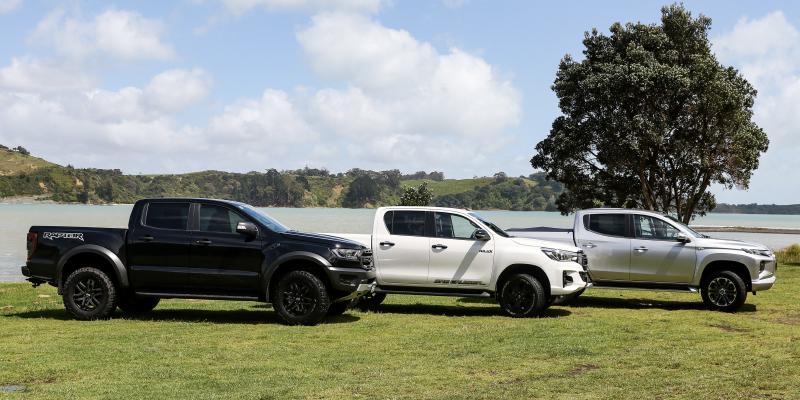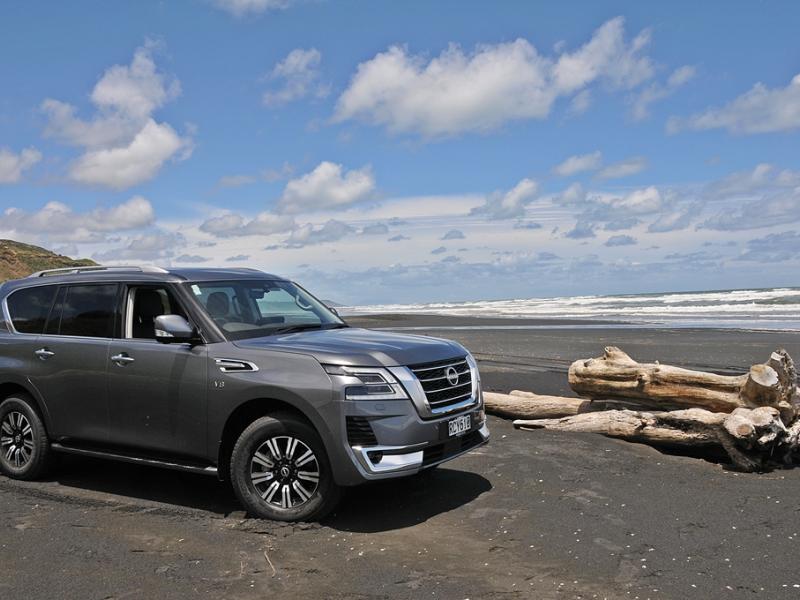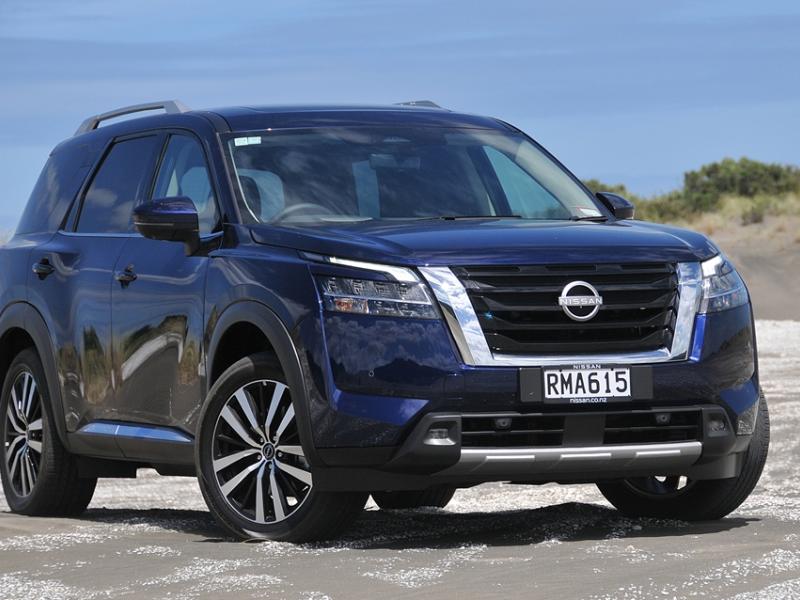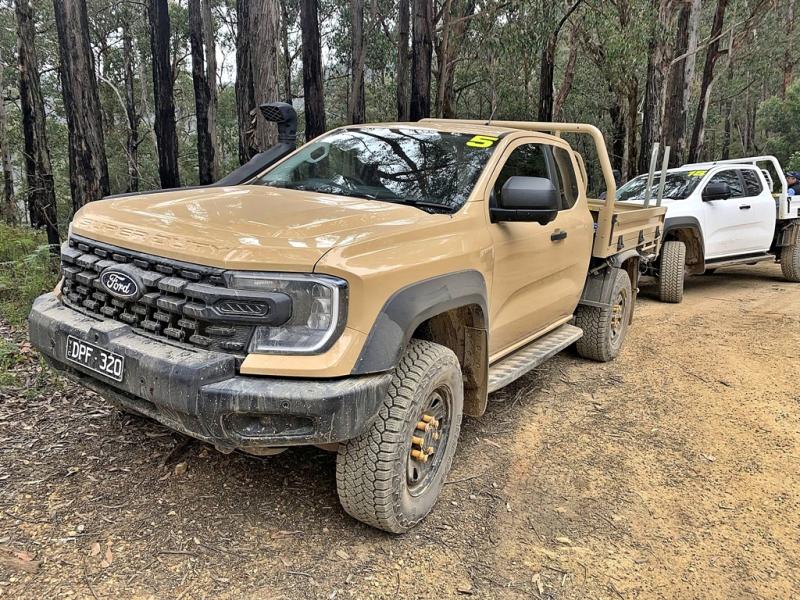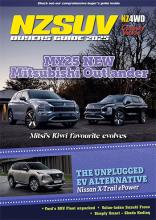Week day work warrior and weekend toy hauler? Is one of our top-selling Kiwi utes way better than the others? Or are they much of a much-ness? We rustled up three of the best and took a day off ‘work’ to find out…
Work hard all week. Check. Look forward to the weekend. Check. Join the Friday exodus out of town. Check.
But how do we take our fave toys with us, and what do we drive? A turbo-diesel double cab 4x4 ute of course, aka ‘the Swiss Army Knife’ of the current vehicle fleet.
We take a look at alternatives at a spec level and price point to suit all tastes and budgets.
We assembled three strong options across spec level and price point for the title of top toy-hauler, whether your toys of choice are mountain bikes, quads, jet skis, motocrossers or UTVs, and took them out on a variety of road surfaces including a neat little rat run that enables commuters to flee Auckland southward without using too much of the motorway.
More of the route later, though, first the vehicles.
Three’s company
Mitsubishi’s Triton in its recently-refreshed and award-winning 4WD GLX-R Diesel format, double cab auto, priced at a frankly amazing (currently on special offer) $41,990 +ORC.
Toyota’s evergreen Hilux SR5 Cruiser Diesel double cab auto with a ‘no-more-to-pay’ Toyota Driveaway Price of $56,990.
And the Ford Ranger Raptor, 4WD Diesel double cab auto with a RRP of $84,990.
So why the Raptor and not the XLT or Wildtrack? After all, it’s a little like bringing a handgun to a knife fight, isn’t it? In our defence, the Raptor gives us that spread of offerings to suit all capabilities and budgets. It’s also NZ4WD’s 4WD Ute of The Year this year. And if given the choice, wouldn’t you jump at the Raptor?
Especially in all-black wheels and bodywork and even more so with the S mode selected.
In the end, horses are for courses and this gave us three very capable haulers to test. These are the vehicles our tradies (bless ‘em) are buying or aspiring to; families all want for the Saturday sports run and we would jump for when it’s time to join the Friday afternoon commute to our favourite camping spot, river, lake or beach. The message is: you really can take it all with you.
Keeping it safe when you do requires the addition of a rear canopy, and there are any number of options there, ranging from the standard sliding closure to a full size canopy that creates massive storage and security. None of these three came with canopies, but none of them would even notice the additional weight. Once there’s a canopy in place then tent fly/shelter attachments come into play too, making the truck the hub of a campsite.
So what did we – that’s myself, regular test ring-in Mark Baker, NZ Company Vehicle Editor and self-confessed commercial vehicle ‘liker’ Sean Willmot, and hard-driving (of his contributors as much as his cars, motorcycles and old Skyline drifter) NZ4WD magazine Editor Ross MacKay.
Ford Ranger Raptor 2.0 bi-turbo/10-speed auto
Mark Baker
Big, bold, black with a strong beating four-cylinder twin-turbo diesel heart, I found driving the Ranger Raptor addictive, once I found S mode among the six options available.
Seriously, the thing is a torque monster, and coupling the engine with the new auto trans is a masterstroke for New Zealand B-roads. I admit to being one of the early sceptics – could a 157 kW turbo 2.0 four really stand in the place of the 3.2-litre five? Now after more time with the four-cylinder I am a convert.
Talk about torque!
It makes a mad amount of torque for its size (500Nm between 1750 and 2000 rpm) and does so in a lovely even spread across the rev range, assisted by that ten-speed transmission.
In our unscientific real world economy check we recorded 10.2 L/100km for the whole trip. More frugal and thoughtful driving would certainly edge this figure down.
That torque means it’s foolishly easy to chirp the 285/70 BF Goodrich all terrain tyres out of low speed corners, but never in such a way that you look like an idiot (speak for yourself, Baker. Ed).
Once moving, the Raptor is sure footed and predictable, loaded or not. It rewards a classic slow entry to a corner, then roll-on of the throttle as the apex is reached. I’ve never liked the fact people buy these trucks then mess with them and try to drive them like sports cars. Just don’t do that, people. It’s dangerous and you look like try-hards.
Having said that, the Raptor is supremely user friendly, and for a big truck so high off the deck it communicates its intent to the driver very clearly. On the old, low grip tarseal of Paparimu Road I wondered if it were going to be a handful but there was never any hint of sustained loss of traction, the stability control worked subtly to keep the truck pointed along the tarmac.
We spent a whole day swapping in and out of trucks and while they all have good seats, I’m going to pick the Raptor’s as best because of their great side location and lower back support. That run to the Coromandel (or, for our southern compatriots, up to Twizel) with the Surtees on the trailer just became that little bit more enjoyable.
Walk around the Raptor, and the styling speaks volumes about its intent. Those big popped guards, the bash plate, the step down each side all evoke the American ‘pre-runner’ ethos.
The big disc brakes gleam out from behind the 17-inch alloy wheels. The signature blue anodised shock absorber rod ends of the Fox suspension package peek out from the front. Air intakes all over the front end. A truck bad enough to recce the Baja, more or less. From the driver’s seat, the bonnet gives a clear indication of where the front wheels are and enables accurate placement in corners. Dash controls are simple and clear, set out in logical groups.
The reversing camera makes backing up to load a trailer the simplest of actions. Something many will appreciate.
Quibbles?
Really just the one. Bringing the torque monster home that evening involved getting up our narrow driveway, which has in the past caused grumbles from my brother in his Nissan Titan.
Turns out the Raptor is not much narrower until or unless you fold in the door mirrors. Reversing is slightly easier because the camera is excellent.
Sean Willmot
“I’m on the Highway to H...” Oops, sorry – bit of residual AC/DC current there. But that’s what happens when you strap on a Raptor.
This is one of those vehicles which just brings out the, hmm – larrikin – in the driver, and I knew that from the moment I first set eyes on Ford’s super ute.
It’s taken me the better part of a year to actually get behind the wheel and in that time, I’ve developed a toughened skin when it comes to Raptor – I was going to take some convincing to be as impressed as the rest of the committee.
In addition to which – putting on my Editor’s hat for NZ Company Vehicle – a Raptor is a hard vehicle to justify, unless of course, you really, really want one, in which case, it’s not hard at all.
Given its apex predator position in our three-way shootout, it’s kind of hard to find fault with the Raptor. I thought the massive mudslinging tyres were overkill and on road, they would be excessively loud. They weren’t, they were nicely noisy, just enough to be badass with a deliciously wicked hint of ’light up’ on take-off.
Once you were rolling, the Raptor’s ‘king-of-the-road’ mode kicked in and while the white lines on either side disappeared under those Goodrich’s – who cared? The Raptor looked planted from behind and the amazingly tricked up suspension gave the ute an innate appearance of road and gravel dominance. Yes, there was some body roll but again, it was “good body roll’’ as opposed to ‘’eew, that felt squirmy.”
My colleagues have commented on the S Mode functionality at length, so I won’t bore you with how cool it was and what a massive difference it makes – I’ll just be a bit more visceral in my comments and quote an international man of mystery: “yeah baby, yeah!”
There’s obviously Ranger-esque design in the dash layout and the instruments, but it’s all very well “Raptorised” so you don’t feel short-changed and it’s all cohesively designed to give you all the data you need.
Performance-wise, oh come on! Do I even need to comment? That bi-turbo is the best thing that happened to Ranger and for the Raptor... puhleese!
I know there are plenty of naysayers out there, but I’ll say this... 500 newton metres of torque, boneheads! Now take your “it’s not enough” comments, write ‘em down on a piece of road somewhere and watch the Raptor tear up the tarmac you’ve chalked ‘em on. Twin turbos rock and 10 speed transmissions trump, well, pretty much everything...
Ross MacKay
Forget the ‘leaps tall buildings’ marketing hype, the Raptor can of course perform stunningly well off-road but at $85K it is a premium ‘my reward for putting my arse on the line’ purchase for all those self-employed tradies and trade-based company owners out there, meaning it is destined for as much day-to-day running on the roads as ‘the boss’ travels between sites and/or jobs as it is ‘aerial antics down the quarry/river-bed’ of a weekend.
Once he (or she!) is used to its sky-high cab, and super-staunch, broad shouldered ‘outa-my-way’ stance, I’d imagine these very same boss-types will get to think that all current model utes have such fantastically all-day comfortable seats, such similarly brilliant engines and perfectly-matched transmissions and smooth, compliant magic carpet ride.
But (how can I put this?) they don’t.
Only the Raptor, for instance, comes complete with gen-u-ine aftermarket Fox shock absorbers (one of the reasons for the price premium).
Those Fox shocks and carefully matched spring rates are a revelation too. They endow the Raptor with such a smooth, compliant ride that it’s easy to forget you are driving a high-riding/high CoG utility vehicle.
Combine the action of the suspension with the prodigious grip of the wheel-tyre package, which creates massive contact patches on the road thanks to a 285-width all terrain spec tyre from off-road masters BF Goodrich, and you have a level of tenacious grip the like of which I have only ever experienced before in a purpose-built track car.
You just have to accept that it is nicest to drive in Sport mode, which requires you to push a button on the steering wheel and select it. Because the default ‘road mode’ is just a tad too ‘soft’ for the performance, grip and all round goodness Ford has built into this ‘frankly remarkable Raptor.’
Oh, and I almost forgot. Though it gives away 1000kg of braked towing capacity (2500kg cfm the 3500kg of the other two) the four-wheel coil-sprung Raptor towed our jetski trailer like a Boss!
Toyota Hilux SR5 Cruiser 2.8 auto
Mark Baker
Having worked for the Department of Conservation on the East Coast in the 1990s, I have a soft spot for the Hilux. We ran a few elderly four cylinder (petrol!) Hiluxes there and were changing out to the 2.8 diesel double cab with five speed manual transmission. No such thing as SR5 trim when you are driving Government-spec trucks. Not, in those days, even a hint of an electric window control. Real trucks, old school diesel engines, all done by 3800 rpm in each gear. I’m betting the boys in the field centre at Gissy would have loved to get hold of one of the latest Hiluxes – they have come a long, long way.
On that, I note the Hilux has been part of the New Zealand landscape for a staggering 42 years. We’ve come a long way since Crumpy and Scotty flew one off that bush-covered cliff in the old ads.
In fact it’s a measure of how good those old Hiluxes were that they stole a march on other ute makers and completely owned the category for several of those four decades.
I’m still a fan. These days the engine-transmission match is very good, delivering 134 kW and 450 Nm torque between 1600 and 2400 rpm. The shorter four-cylinder engine helps keep weight distribution adjacent to the wheelbase, keeping the truck agile on the B roads of our route and the load space is as good as either of the other trucks. Kerb weight approaches 2.1 tonnes, towing capacity is 3500 braked.
In-cab I’m less comfortable – ergonomics are slightly harder to tailor to my preference. Subjective and personal, but there it is. The instrument placement is great, delivers what the driver needs, though I’m not a fan of the placement of the big screen, still feeling like it was an iPad-and-duct tape afterthought.
Hilux styling can seem a teeny bit conservative alongside the brash and brawny Raptor, but it also starts at a price advantage that would enable the owner to dress the truck to stand out. There is no end of aftermarket or Toyota product that add to the SR5 trim level – and anyone wanting to go the whole hog needs only to take a look at the Hilux Toyota put together when it was working with Willie Apiata VC, or more recently at the Gladiator concept which did the rounds PR and sales-wise then went on TradeMe where it went to $70,000 overnight from a $1 starting bid. Gasp.
Sean Willmot
Out of the three, the Hilux felt to me to be the odd one out. Lining all three utes up, side by side, the Hilux naturally fits in the middle; in pretty much every respect. It has the mid-sized engine, the least dramatic exterior styling and the least cohesive interior. In terms of price, the Hilux represents the middleman too. It’s just – there, Joe Average.
But not so much in terms of its drivability. I felt the Toyota to be the unladen champion of twitchy-ness with a disquieting ‘floating feel’ at the front end in comparison to the other two. The Hilux also looked – and later felt – to be the least composed at the back end, taking longer to settle down than either of the other two utes.
In terms of its performance, I can’t honestly say the engine was good or bad. It did what it was called upon to do without complaint, but there was nothing to recommend or crucify it, which in itself is representative of what many perceive Toyota to be – good, reliable, dependable. And the Hilux 2.8 ticks all those boxes.
Toyota has put time and effort into the Hilux design and that is something that should not be taken away as it proves the tried and true can keep up with the times. Sure, there will be some out there who don’t agree with the look the designers have gone for, but the new nose is not sufficiently ‘out there’ to cause offence. As a wise Southern man once said, “It’s a hard road finding the perfect compromise, boy.” While Toyota’s truck has set itself up to remain the fixture it is for the foreseeable future, I find myself asking the question: what does Toyota need to do to get the Hilux back to its former glory as number one?”
Right now, while it’s capable enough and well equipped in terms of safety kit and performance, it seems to lack the X-factor to take it from good to great...
Ross MacKay
I like the Hilux. Particularly in Sport mode where the 2.8 litre Toyota engine and six-speed auto are pretty well perfectly matched.
In fact if I didn’t know that Ford had created its current Ranger line I’d think that overall the Hilux was pretty good – for a ute. I like the look of the thing now that Toyota has sorted the nose and front end styling. And I don’t mind the (still a bit jiggly and floaty ride – now that Toyota has finally sorted the ‘too-stiff’ rear end.
I liked the feel and look of the ‘leather accented’ seats Toyota includes in its SR5 Cruiser spec though they lack a little in bolster support.
I liked (most) of the safety tech that helps earn a Hilux its five ANCAP stars too – except for the intervention of the Lane Departure Alert with Yaw Assist Function.
Where similar systems on other cars and utes will warn you with a chime and a flashing light on the dash the Toyota one also ‘provides a small amount of assistance by applying a small braking force to help the driver keep the vehicle in its lane.’
The reality is a quite off-putting ‘duck and swerve’ to the left or right that feels at first like a front tyre has deflated. Definitely gets your attention.
Otherwise the Toyota has a familiar look and feel which I like. It’s not possible to see a Hilux on the road and wonder what you just went past; the brand is unmistakeable.
That new nose styling has freshened the look, but in a very ‘Hilux’ way.
Mitsubishi Triton GLX-R 2.4 diesel auto
Mark Baker
Cost effective off the showroom floor and just plain effective on the road, the Triton gives a good account of itself in this company taking into account the price difference.
The engine works hard, making almost as many kW as its rivals though of course not as much torque as the newer Raptor. Coupled to a six-speed auto transmission and running through the company’s Easy Select four-wheel-drive transmission, the MIVEC unit isn’t embarrassed in any circumstances. You’d just get to Pauanui a little slower than if you used one of the others.
Speaking of which, none of these three were used on the open road in four-wheel-drive. Even though there were rain showers marching around the South Auckland/Hunua/Thames area, there was no reason to. Rear wheel drive and a decent wheelbase gets the job done. Hook up the front wheels when the surface changes to dirt by all means, it does then make a difference. And Triton has a secret weapon here. New this year is a super ‘low-low’ range in the transmission, which is worth noting. It’s going to enable you to crawl slowly up a slippery boat ramp, or reverse your boat or caravan around a corner of the house to its parking place. Having learned to drive in a series two Land Rover, I’d never considered how useful a low range shift can be in this respect until I had to do the same thing in a car. Strewth.
Like the Toyota, the Mitsi is good for 3500 of braked, towed payload. Its workmanlike origins are apparent when unladen though, the pitching and bounce are unwelcome additions to the dynamics of a truck grappling with patchy, bumpy tarmac. Pack some toys in the tray and it’s different. Much more civilised.
Sean Willmot
I’m actually quite astonished at what Mitsubishi has done with the Triton. I wouldn’t have thought it possible for a vehicle to come as far as it has with one generational change. I’m also surprised that while the Triton may appear a bit of an ‘also ran’ it has the chops to take on anything in class and impress with its performance.
Having pitched the Triton against other utes, I can’t – hand on heart – not acknowledge the Mitsi’s abilities, appearance or aspirations to become a number one contender. What Mitsubishi’s engineers have done with the suspension that is so masterfully hidden by the new Diamond Shield exterior, has made such a huge improvement over the ute’s handling, it beggars belief. I have driven the Triton loaded and empty, and for me, the suspension is so well sorted that the ute’s handling is unflustered either way.
The exterior design has found favour with most and it certainly has made a striking change from the beaky look of the preceding model to the squared off “in your face’’ look which is finding its way across other Mitsubishi product lines. You saw it first in the Triton though and while there is still something unmistakably Mitsi about the new look, there’s no arguing the Triton has presence.
In cab, the Triton could be considered a little plain Jane and that’s going to be a hard one for Mitsubishi to counter. There’s nothing wrong with it and all the elements are there in terms of information you need to access, but there is still a lingering sense of being a little too practical and needing a little jazz. On the other hand, the pricing is reflective of this and the Triton bills itself as a working truck after all. This was the GLX-R specification and if you want leather and highlighted bits, there is always the VRX grade to deliver a little pizazz.
Performance-wise, the 2.4 litre engine has history – and that’s a nice way of saying it’s been around a long time – but there is still a lot of life left in it as Mitsubishi has proven with a tickle up here and there and the upgrade to the six-speed trannie. I never once felt the engine lacking in go or refinement and yes, there were times when it put a smile on my dial as all aspects of the ute came together during some spirited driving moments.
Put up against the other two, the Triton may appear to be the underdog entry, but that’s not an accurate assessment. There’s good reason why Mitsubishi went from number five in the ute rankings to number three with this current iteration and it wasn’t all about price. Once you drive the Triton – even if you’re sceptical – you’ll be surprised at how good it actually is.
Ross MacKay
I’m on record about the new look – I love it. I’ve also liked the engine since first trying it. The revvy, willing 2.4 litre MIVEC engine was never found wanting in our drive test. It makes 135 kW from its smaller displacement and 430 Nm of torque.
That’s said, swapping in and out of the three trucks, I did find the Mitsi’s engine slightly unruly or peaky in its delivery with the most turbo lag of the three.
In isolation the Mitsi does everything well but in company it is smaller, narrower with less room inside.
Under that neat new front end treatment, a revised front suspension does a decent job on-road and transforms off-road grip. Again, however, when the back is empty and the road is bumpy it can at times feel a bit like riding a teabag which someone is jiggling.
The general specification is high, meaning the Triton isn’t as much out of scope as it might seem in such a group.
But then, the Mitsi is about value for money end and it’s always delivered in this respect.v

